Phonics.org takes a closer look at literacy programs so that you can make more informed choices about what apps to use for the new reader in your life.
Continue reading to discover more about Foundations A-Z.
What is Foundations A to Z?
Foundations A-Z is a newly-redesigned digital learning program by Learning A-Z, formerly known as Headsprout.
This program was created to align with the science of reading to teach students from Kindergarten to grade 5. Launched in 2024, this web-based platform is designed for parents and teachers to support students in developing foundational literacy skills:
- Letter names
- Letter sounds
- Letter formation (printing)
- Phonemic awareness (rhyming, syllabication, phoneme blending, etc.)
- Decoding (word-reading)
- High-frequency words instruction
Foundations A-Z has several notable pros and cons that educators should be aware of so that they can support students.
Usability of Foundations A-Z
Usability relates to how easy the platform is for kids to navigate, use, and understand. Here are some of its features.
Sign-Up and Log In
The sign-up and log-in process is simple for teachers, parents, and kids to figure out. Students can log in with their name and a picture password. This makes accessing the games fairly easy. Ready-made parent initials for logging in and providing lesson information are also easily accessible.
Student Management
Foundations A-Z has a very detailed “Student Management” area for creating classes of students with passwords, changing learning settings, and evaluating progress. The student reports are incredibly detailed and would offer educators valuable feedback on how children are doing in the program.
Instructions and Gameplay
The instructions in Foundation A-Z are clearly stated and repeatable. Unfortunately, many of the game instructions appear unnecessarily complex and lengthy. This is not ideal for most children and would be especially difficult for children who have language disorders, attention difficulties, or executive functioning struggles.
Additionally, the long instructions need to be repeated even if the child just wants to hear the keyword or single sound to answer the question. This can become boring and frustrating for players.
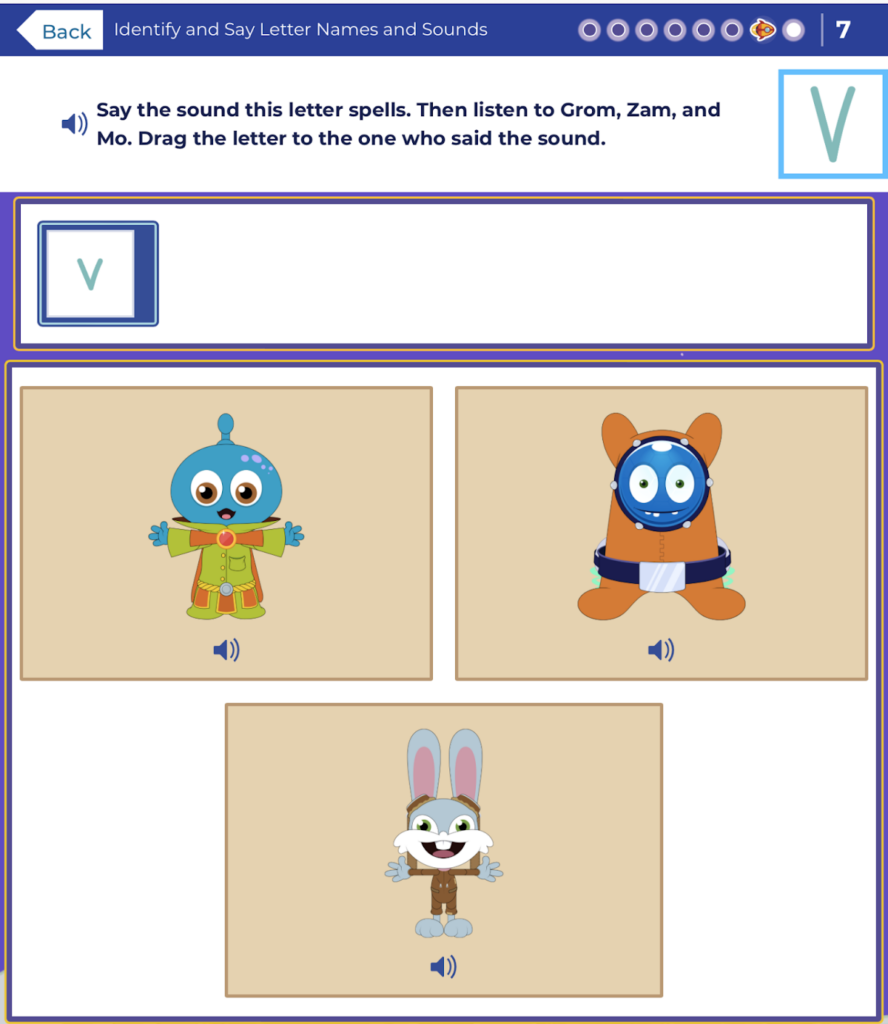
Microphone Feature
A microphone feature encourages children to say sounds or read words out loud. This is a great feature for encouraging active engagement. However, the microphone needs to be calibrated every time it is used, even from one game to the next in the same sitting. This involves touching a ‘record’ button, counting to 5 out loud, stopping the record button, and then submitting the answer with another button and waiting to see if it worked. This is a lot of extra steps for kids to go through to read a word out loud.
Not only is this feature complicated to use, but the program often gives inaccurate feedback to the learner. In this way, a player could read a word incorrectly and the game would congratulate them for reading it correctly. Inaccuracies likely increase if a child has concerns with speech articulation or an accent.
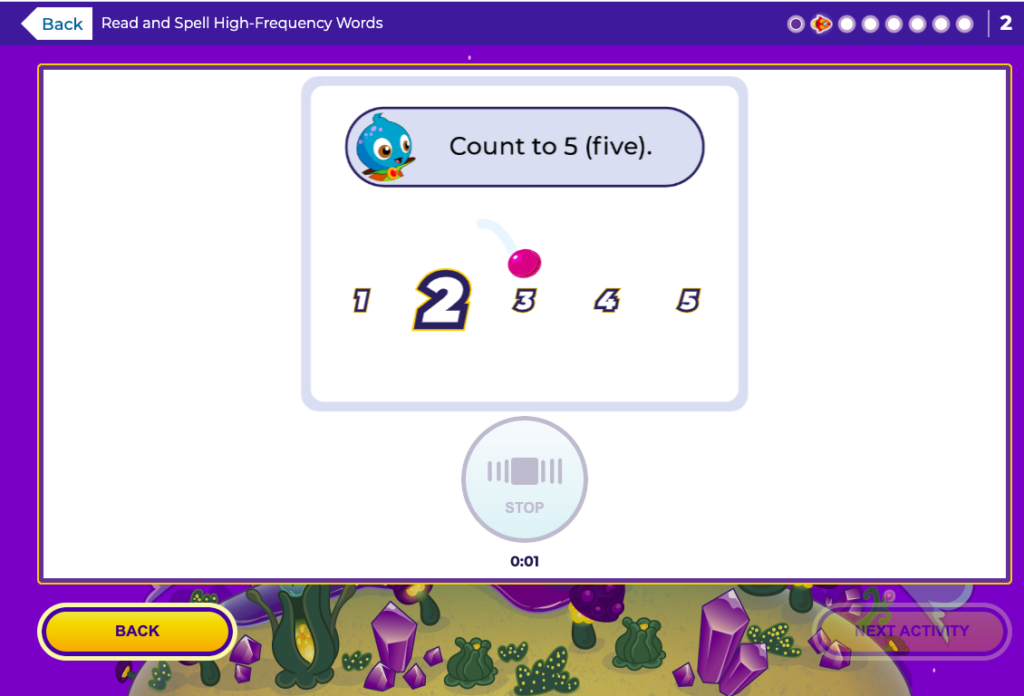
Visual Organization
Foundations A-Z contains odd visual settings for gameplay. Often, the answers are too large to fit on one screen. Kids must know how to scroll around the screen to see all the answers to most questions. They need to click another button to “check answer” and then another button to know if their answer was correct.
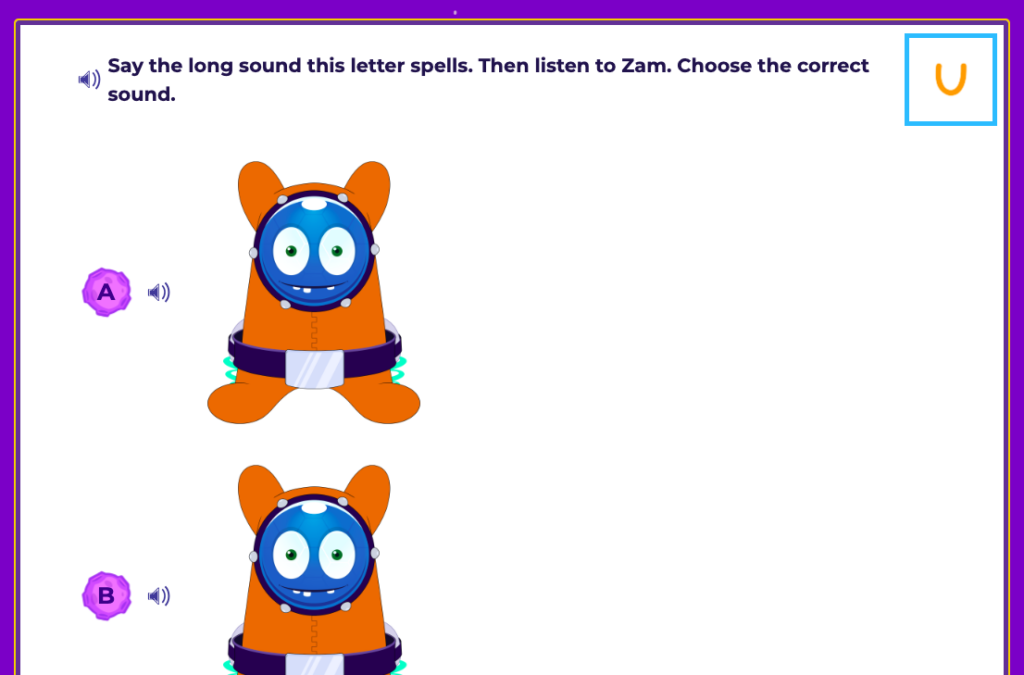
Engagement in Foundations A-Z
These factors contribute to the overall engagement of children playing Foundations A-Z.
Games and Activities
The energetic and cute characters in the game add interest and positive reinforcement for players. However, complex instructions and gameplay could interfere with a child’s ability and willingness to play the games.
Star Zone Rewards
In the Rewards feature, children can earn ‘stars’ by engaging with lessons or completing games. These stars can be exchanged for one of three interesting options:
- Custom Background: Changing the background of the game
- Avatar Builder: Customizing robots’ features, clothes, and accessories
- Raz Rocket: Designing the inside of a spaceship by purchasing items
To maintain focus, the reward options are customizable. This allows teachers or parents to turn off all or some rewards if they become too distracting.
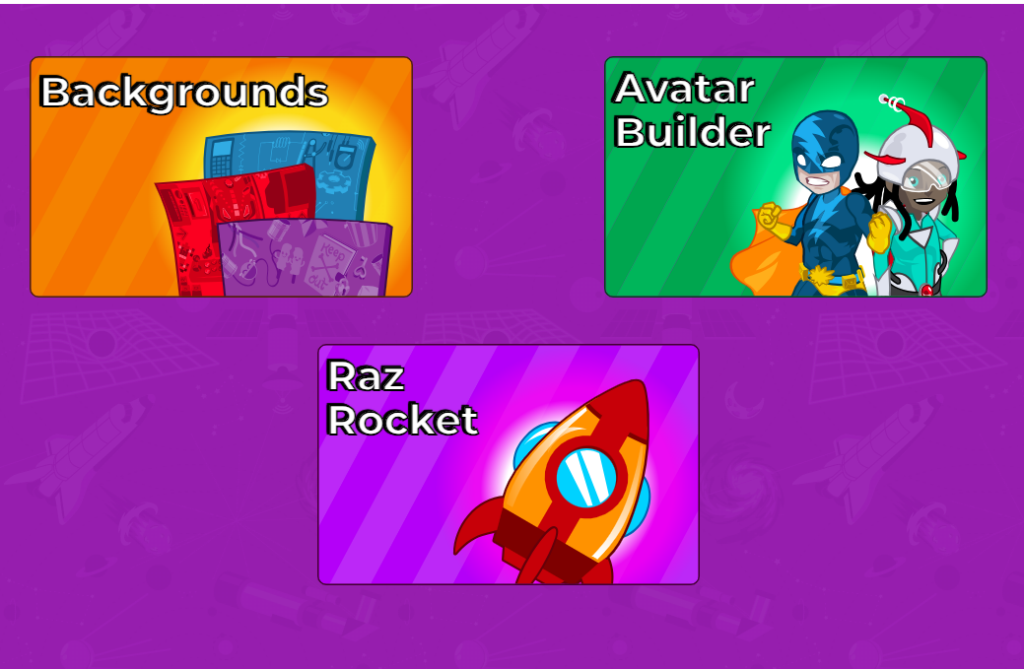
Literacy Concepts in Foundations A-Z
Here are some factors that contribute to the overall quality of literacy instruction in Foundations A-Z.
Lesson Organization
Foundations A-Z has a detailed, planned scope and sequence indicating the order of literacy content. Systematic literacy instruction is highly recommended by experts in the field. In this way, children learn information in a step-by-step manner. It’s a logical and research-based method of teaching reading.
Direct Instruction
The Foundations A-Z literacy program incorporates engaging characters and narrative elements. Videos with these characters provide direct teaching instruction in the game. Direct and explicit teaching in phonics skills is highly recommended by reading experts, generally making these videos a benefit to the program.
These videos have a piece where they ask children to tap or interact with something on the screen. Unfortunately, this is a video. The tapping just pauses the video. The instructional pieces should not ask for interaction from children when it isn’t possible or disrupts learning.
Cognitive Overload
The instructional videos are packed full of information. For example, one of the first direct instruction videos includes information on:
- Review of all letter names
- Letter sounds
- The difference between consonants and vowels
- The /n/ sound
- Uppercase and lowercase letter information
- Formation of printing the letter <N>,
- How to make the sound /n/
- Counting words in a sentence
This information is important and valuable. However, providing all this information at once is rather overwhelming.
Additionally, some of the information in these lessons is too technical to share with very early readers. For example, one of the early instructional videos includes information about short vowel sounds in closed syllables.
Chunking information into smaller, sequential lessons better supports many learners. Simplifying important information for young learners must also be a priority.
Letter Sounds
The letter sound instruction within the Foundations A-Z literacy program is generally clear and accurate.
There are a few inconsistencies in the consonant sound for /y/. Letter sound learning is accompanied by videos of a mouth that shows how the sound is made. There is also a short description of what a child’s mouth, tongue, and lips are doing when making this sound. This has been shown to support children in learning and remembering letter sounds accurately and is a good addition to the program.
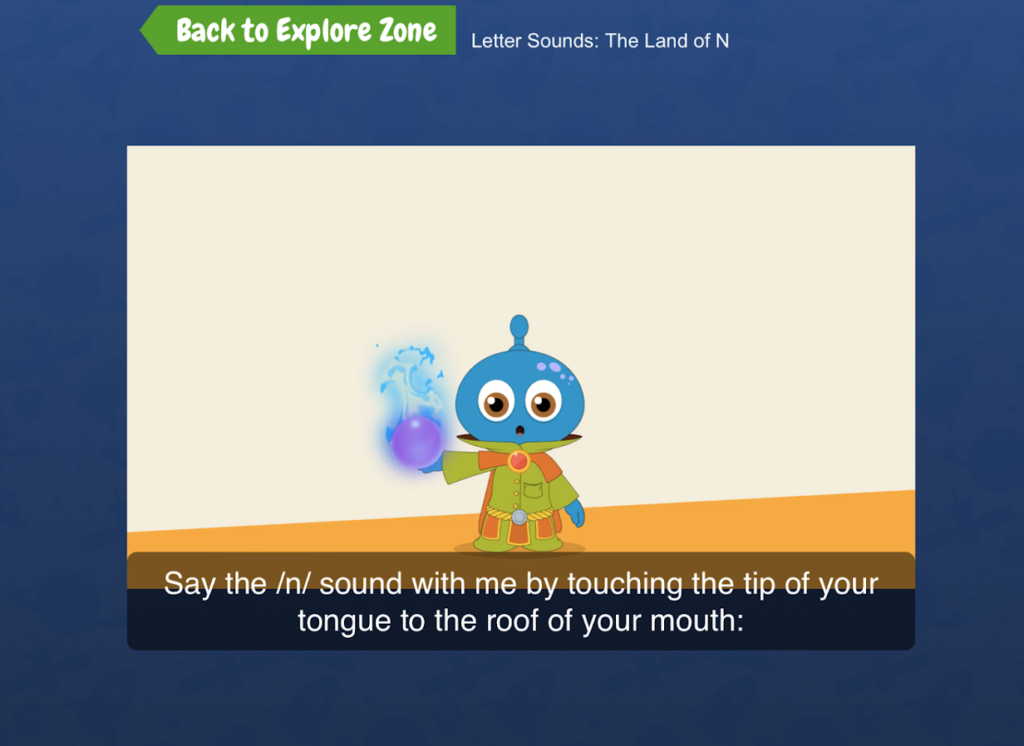
Letter Formation
Foundations A-Z includes explicit instruction and modeling of letter formation. This is an excellent aspect to include in a reading program. The letter formation in Foundations A-Z is accurate. The program also includes a verbal path for letter formation. A verbal path is a consistent set of oral directions that can be associated when making the letter to encourage appropriate formation.
Unfortunately, the verbal path in Foundations A-Z is quite verbose. A more succinct verbal path does a better job of helping children remember how to form letters.
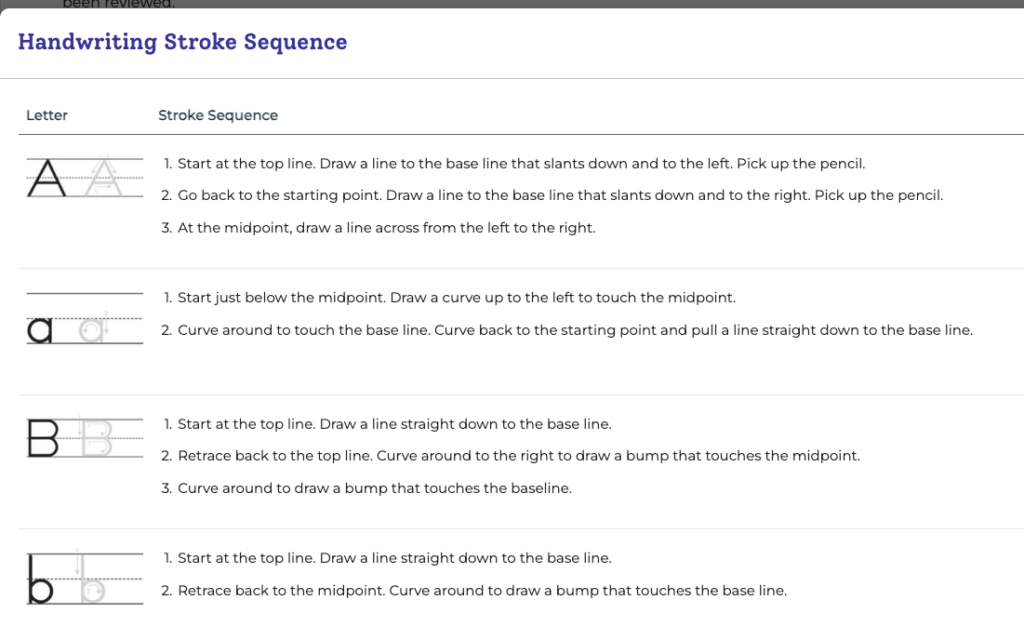
Type of Texts
Foundations A-Z uses decodable texts to encourage children to practice reading continuous texts. Decodable texts contain words that children have been taught to read. This encourages decoding and discourages guessing.
Children can choose to listen to the digital book or read it themselves. When a word is selected, children can have it highlighted, read to them, or added to a word journal. These are great features that allow children to learn more independently.
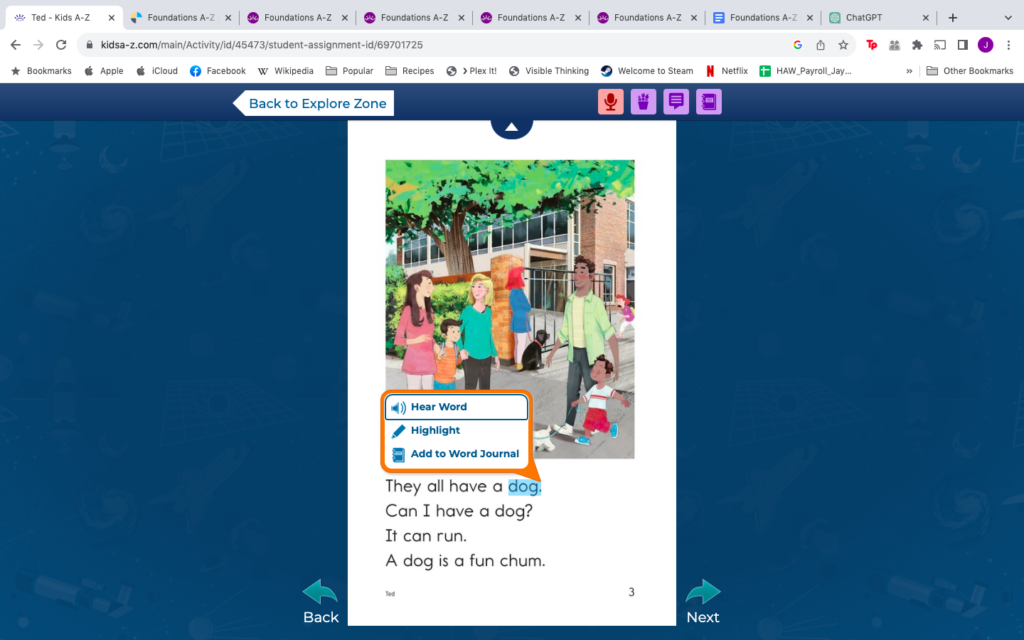
How Effective is the Foundations A-Z Platform?
Overall, Foundations A-Z seems to be aligned with reading research.
- There is a clear scope and sequence.
- It uses synthetic phonics with explicit and direct instruction for letter names, sounds, and formation.
- Children learn how to sound out a word using individual letters and sounds, which is a rare and important feature of an online reading program.
The follow-through and implementation of some of these features could use some improvements for children. Many of the game instructions, video lessons, and letter formations are overly verbose and occasionally too technical for the youngest learners.
Games need to be scanned and scrolled to see all potential answers and methods of playing games and answering questions are not always clear. A child who has issues with memory or attention may struggle to learn with this program.
This program is also relatively new and still has some glitches that make it difficult to play. For example, playing Foundations A-Z games on an iPad does not function well. Some games are unanswerable and the microphone system should not be relied upon to give accurate feedback to children.
Hopefully, with system updates, some time, and finessing, Foundations A-Z will become more functional for new readers.
Want to explore more phonics and reading programs for kids? Check out Phonics.org reviews from literacy instructors!
Foundations A-Z: Overall Rating
Quality of Literacy Instruction: 3.5 / 5
Usability: 2 / 5
Engagement: 3 / 5

